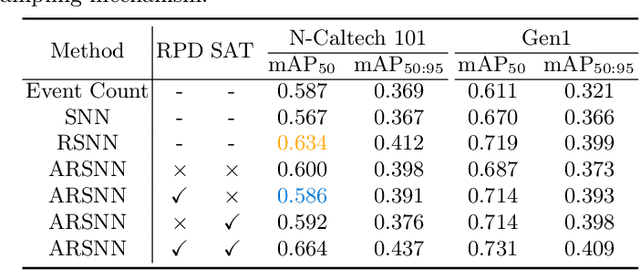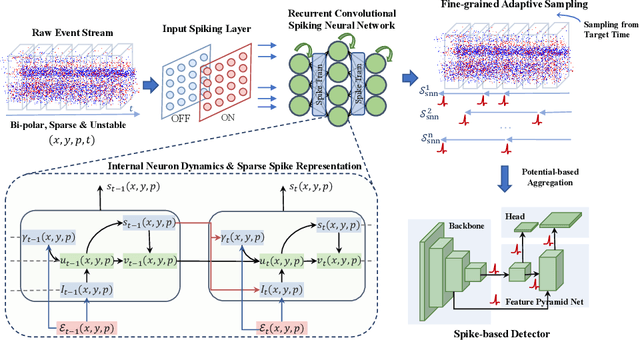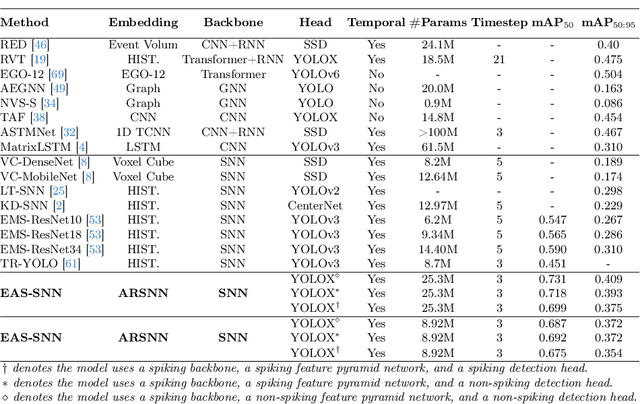Huaning Li
EAS-SNN: End-to-End Adaptive Sampling and Representation for Event-based Detection with Recurrent Spiking Neural Networks
Mar 19, 2024



Abstract:Event cameras, with their high dynamic range and temporal resolution, are ideally suited for object detection, especially under scenarios with motion blur and challenging lighting conditions. However, while most existing approaches prioritize optimizing spatiotemporal representations with advanced detection backbones and early aggregation functions, the crucial issue of adaptive event sampling remains largely unaddressed. Spiking Neural Networks (SNNs), which operate on an event-driven paradigm through sparse spike communication, emerge as a natural fit for addressing this challenge. In this study, we discover that the neural dynamics of spiking neurons align closely with the behavior of an ideal temporal event sampler. Motivated by this insight, we propose a novel adaptive sampling module that leverages recurrent convolutional SNNs enhanced with temporal memory, facilitating a fully end-to-end learnable framework for event-based detection. Additionally, we introduce Residual Potential Dropout (RPD) and Spike-Aware Training (SAT) to regulate potential distribution and address performance degradation encountered in spike-based sampling modules. Through rigorous testing on neuromorphic datasets for event-based detection, our approach demonstrably surpasses existing state-of-the-art spike-based methods, achieving superior performance with significantly fewer parameters and time steps. For instance, our method achieves a 4.4\% mAP improvement on the Gen1 dataset, while requiring 38\% fewer parameters and three time steps. Moreover, the applicability and effectiveness of our adaptive sampling methodology extend beyond SNNs, as demonstrated through further validation on conventional non-spiking detection models.
 Add to Chrome
Add to Chrome Add to Firefox
Add to Firefox Add to Edge
Add to Edge